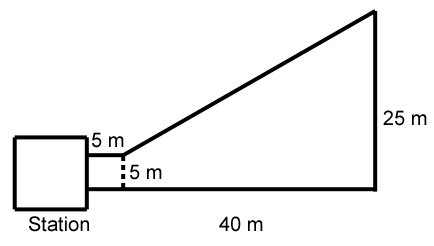Real-Life Math
"Roller-coaster designers use math every day," says Ron Toomer.
"We use everything from straightforward high school math such as angles and
trigonometry to physics math such as the laws of motion to high-level engineering
math."
You've just completed the conceptual drawings for a new
roller-coaster. It looks really good and the client is quite pleased.
Now
you have to transfer your design from freehand drawing into a CAD (computer-aided
design) program along with some of your basic calculations. You need it in
CAD so that the machinists and technicians can begin creating parts.
In
order to give the computer the necessary information, you have to determine
the slope of the climb of the coaster. From your drawings, you've determined
that the climb starts 5 meters from the loading station at a height of 5 meters.
The end is located 40 meters
from the station at a height of 25 meters. The technicians will create the
climb portion of the track in halves. That means you'll also need to
determine the height of the track halfway up the climb.
Use this formula
to calculate the slope:
Slope (M) = rise / run
M =
(y2 - y1)/(x2 - x1)
The coordinates for the start and finish of
the climb are: (x1, y1) = (0, 5)
(x2, y2) = (40, 25)
This
is the equation of a straight line:
y = Mx + b
What slope
are you going to enter into the computer? What is the height of the track
halfway up the climb?